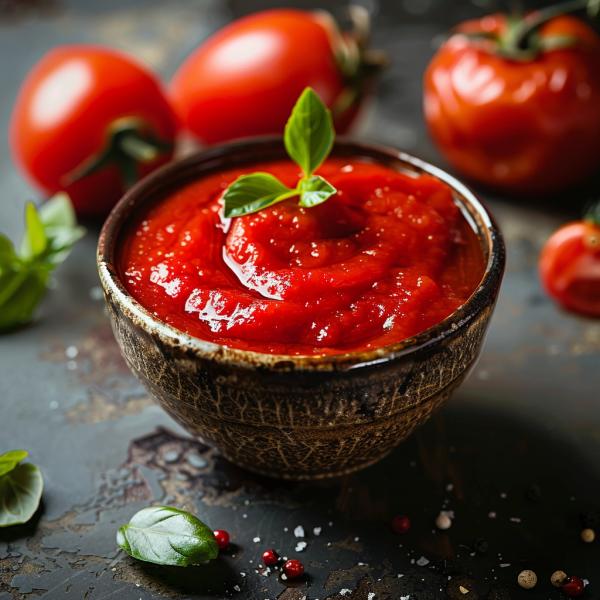
Tomato puree
Tomato purée is a thick, smooth liquid made by cooking and straining tomatoes. It's a versatile kitchen staple used worldwide to add depth, color, and tomato flavor to a wide range of dishes. Here’s how tomato purée is commonly used in cooking:
Sauces: Tomato purée forms the base of many sauces, from simple pasta sauces to more complex ones like marinara, arrabbiata, and pizza sauces. It provides a rich tomato flavor and smooth consistency.
Soups and Stews: It's used in soups and stews to add body and a rich tomato base. Tomato purée can enrich everything from classic tomato soup to minestrone and various meat or vegetable stews.
Curries: In Indian and other South Asian cuisines, tomato purée is often added to curries to contribute a tangy depth of flavor and to help thicken the sauce.
Braising Liquids: Tomato purée can be added to the liquid used for braising meats and vegetables, lending color, flavor, and acidity that helps balance the richness of the dish.
Chili: It's a key ingredient in many chili recipes, where it adds a foundational tomato flavor and helps create the desired consistency.
Casseroles: Tomato purée is used in casseroles to add moisture and flavor, particularly in layered dishes like lasagna, where it complements cheese and meat.
Marinades: Tomato purée can be used as part of marinades for meat, poultry, or vegetables, adding acidity which helps to tenderize and flavor the food before cooking.
Rice Dishes: In dishes like Spanish paella or Italian risotto, tomato purée can be used to infuse the rice with a subtle tomato flavor and color.
Meatloaf and Meatballs: Tomato purée can be mixed into the ground meat mixture for meatloaf or meatballs, or used as a sauce on top, adding moisture and flavor.
Baking: In baked dishes, tomato purée can be used as a layer or topping, providing moisture and flavor. It's particularly common in vegetable bakes and some savory pies.
Tomato purée adds a concentrated tomato flavor without the chunks present in diced tomatoes or the thinness of tomato juice, making it a versatile ingredient that can be used in both cooking and baking to enhance the flavor profile of a dish. Its use can vary from being a primary ingredient that shapes the dish's character to playing a supporting role by adding depth and body to the overall flavor.
Nutritional Information
calories
38
carbohydrates
8.98 g
fats
0.21 g
protein
0.65 g